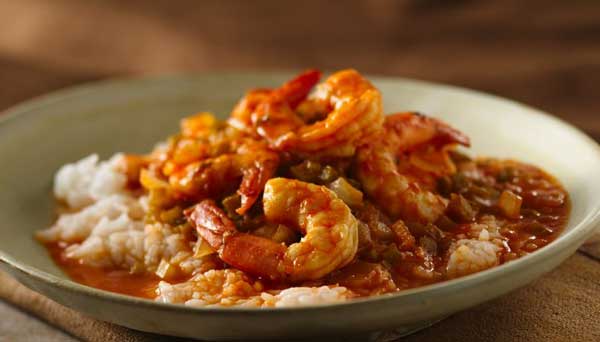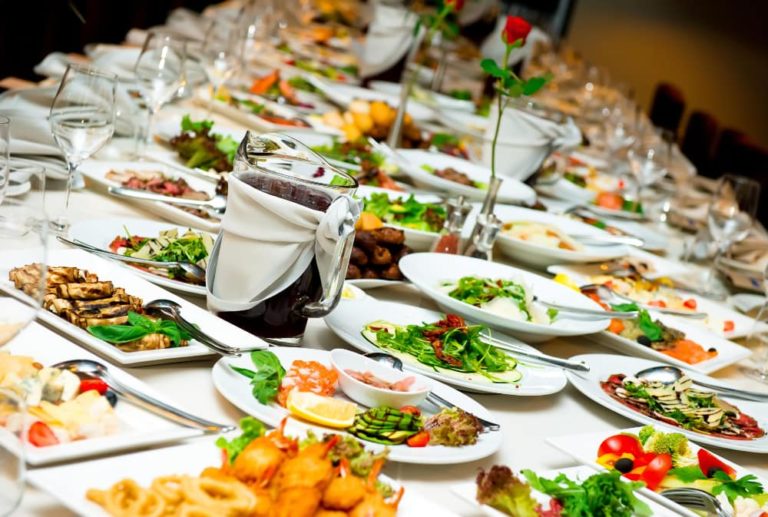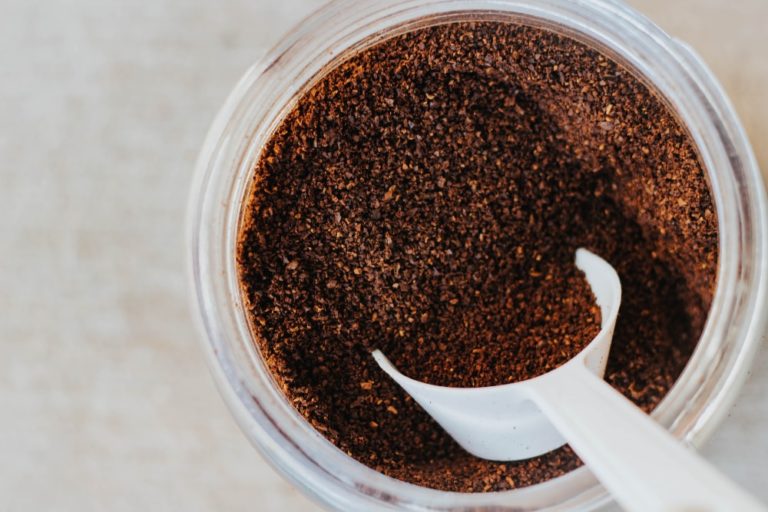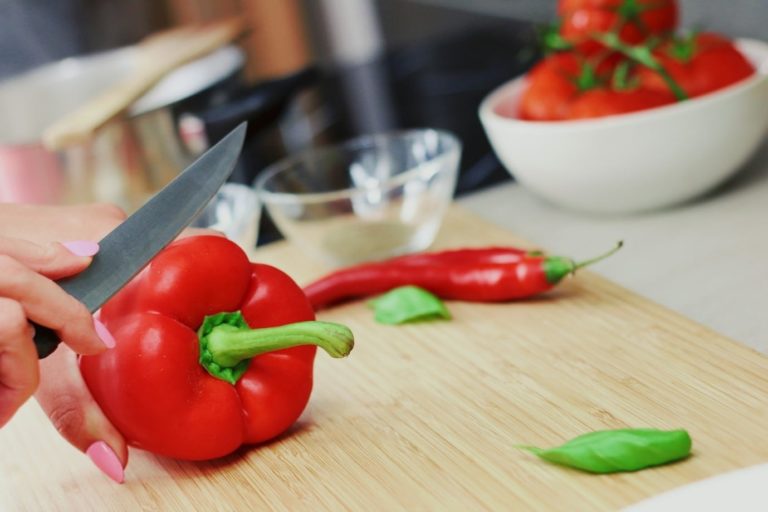Difference Between Creole and Cajun Seasoning with Recipe
Choosing the right type of spices can be daunting at times when it comes to making a culinary masterpiece, and there are thousands of spices to choose from.
What can be further confusing is, there are some spices which seem to be pretty close in terms of their blends, usage, and so on.
Creole and Cajun seasonings are good examples of seasoning blends that often cause confusion. Many people find them similar but are they really so similar that they are interchangeable? Both Creole and Cajun cuisines and seasonings have long standing roots in the food industry, but how are they similar and how are they different? Let’s find out!
In this article we will explore the history of these cuisines, what Creole and Cajun seasonings are, and the major differences between Cajun and Creole seasonings. In addition to that, we’ve got simple recipes to follow to prepare these seasonings yourself at home.
Let’s begin by exploring the history of Creole and Cajun cooking.
The History
Creole and Cajun seasonings stem from very different backgrounds and originate from different cultures. Gradually over time these cuisines seem to have become fairly similar and many of us find it difficult to tell them apart.
Creole Cooking
Historically, Creole cooking was only city-based, and this cooking emanates from New Orleans, the USA. Creole cuisine is historically influenced by the group of people who turned to settlers in the area of French colonial Louisiana, precisely in New Orleans.
While mainly influenced by French cooking, Creole cuisine also incorporates cooking traditions from other parts of the world such as Germany, Spain, Italy, the West Indies, and several African countries.
So Creole food is truly a mixture of cultures blended together to become an American style melting pot. Creole cuisine is commonly less edgy and more refined than the Cajun cooking.
Cajun Cooking
On the flip side, Cajun cooking was introduced in Louisiana by a group of people who lived in backwaters and swamps more than within the New Orleans city.
These Cajun Acadians used to speak French and originally came from France way before being exiled. They had been allowed to go to Nova Scotia and then to settle in Southern Louisiana in what was known as Le Grand Dérangement, in the period of 1700s.
Afterward, they became known as Cajuns. The seasonings used by them rely on peppers which are spicier and stronger in taste and smell than the Creole seasonings.
Cajun food was historically for peasants and usually used ingredients native to Louisiana. These ingredients included turtles, alligators, and crawfish. Nowadays, these ingredients are frequently also found in Creole food.
Creole Seasoning
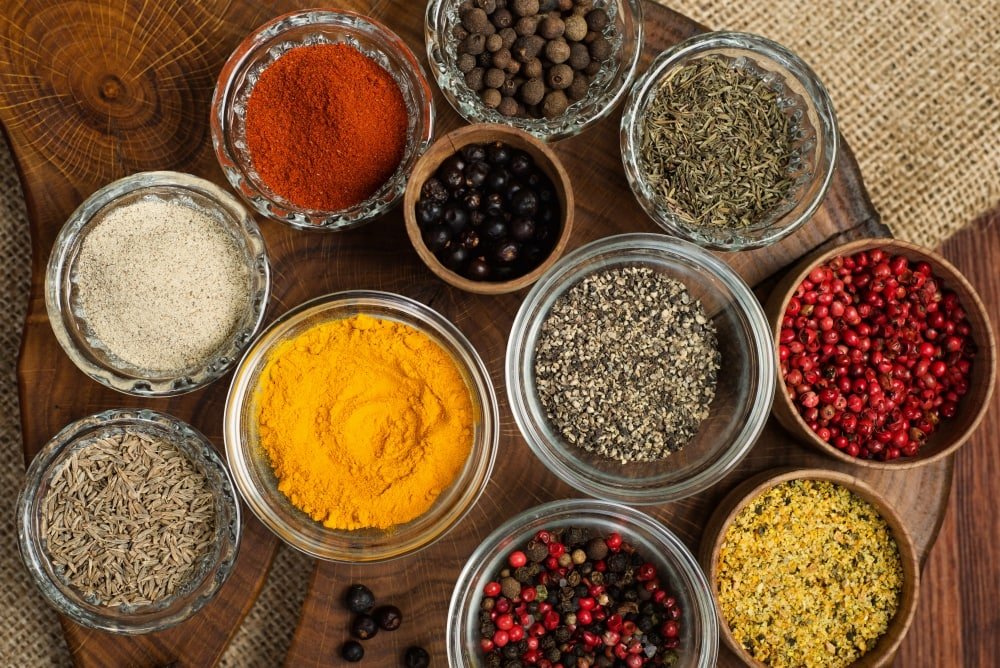
Creole seasoning was essentially derived from a European, sophisticated style of cooking, but the recipes vary across countries.
Leafy herbs like bay, oregano, basil, rosemary, thyme, and parsley are normally used. These days, Creole seasoning overlays with Cajun seasoning due to its use of paprika, salt, and garlic.
Cajun Seasoning
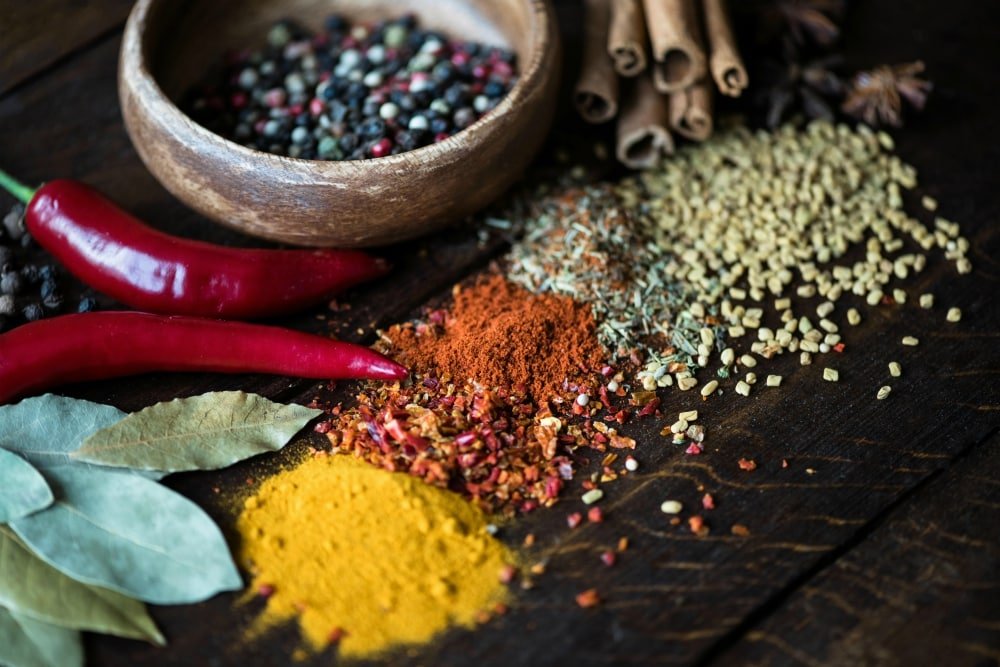
The ingredients of Cajun seasoning consist of many forms of peppers, from mild to regular to spicy: black pepper, white pepper, cayenne peppers, and bell peppers.
Anything grown or cultivated in the garden was used in the archetypal and one-pot Cajun meal. The essentials include but are not limited to peppers, onions, and celery which are often used to form the base. As the Cajun Acadians attuned to life in Louisiana, so did their cooking.
The Cajuns also add in traditional Creole herbs such as sage, parsley, thyme or oregano, but with less importance than that of Creole seasoning.
The Difference Between Creole and Cajun Seasoning

One of the major differences between Creole and Cajun Seasoning is that the Creole seasoning uses tomatoes, whereas Cajun seasoning does not.
Cajun cooking was primarily developed by farmers who used to live outside of New Orleans city whereas creole cooking originates from city dwellers.
Creole Seasoning
Creole seasoning versus Cajun seasoning basically comes down to one question, do you want something seasoned or something spicy? If you want something well-seasoned, you are most likely to enjoy creole. If you want spicy, you’ll want to give Cajun food a try.
Creole cuisine is a mixture of many different cultures, from Irish to French to West African.
Creole seasoning is primarily based on herbs, such as bay leaf, oregano, basil, rosemary, thyme, paprika, and parsley.
In terms of pizza, there are some choices you may go for- something a bit creole-flavored. Take toppings which are commonly combined with creole seasonings such as bell peppers and onion.
You can choose toppings that are regular ingredients in Creole cuisine, like sausage and tomato.
Cajun Cuisine
Cajun cuisine is actually based on the three-pot method. Here, one cooking pot is used for the main dish, one for rice, and one for vegetables.
Cajun seasoning is based on the use of many types of peppers like black and white pepper, cayenne peppers and bell peppers.
Cajun cuisine incorporates garlic and paprika as well. The use of celery and onion is also very common for Cajun cuisine.
For a Cajun based pizza, you might consider choosing similar toppings, yet you can add pepperoni and opt for a Cajun-flavored crust.
Take note that these days, Cajun and Creole cuisines have started to become more alike and follow each other’s ingredients. You will find many people adding paprika, salt, and pepper into creole seasoning, although these ingredients are traditionally used for Cajun seasoning.
On the other side, even though thyme and sage are more typically used for creole seasoning; you will find herbs such as these being used in Cajun seasoning.
Now, I am going to let you know the methods of making these seasonings.
Recommended: A Guide To Chose Right Cake Turntables
Best Creole Seasoning Recipe
You can season any types of foods you wish to with Creole seasoning. This blend is particularly good for rice, stews, meat, and most soups.
Really, any food that you feel needs a flavor boost could make use of this handy creole seasoning recipe.
Creole Seasoning Recipe 1
Required Ingredients:
- Powdered garlic- 2 tablespoons
- Paprika- 2.5 to 3 tablespoons
- Salt- 2 tablespoons
- Powdered onion- 1 tablespoon
- Cayenne pepper- 1 tablespoon
- Dried oregano- 1 tablespoon
- Black pepper- 1 tablespoon
- Dried thyme- 1 tablespoon
- Dried mustard – 1 teaspoon (optional)
The Instructions
How to make your own homemade Creole seasoning.
Start with three tablespoons of paprika and to that you need to add two teaspoons of cayenne, one teaspoon of black pepper. I like mine freshly ground and also if you like it hotter feel free to adjust the cayenne or the black pepper or the white pepper for that matter.
With that mixture, add in one teaspoon of white pepper, one tablespoon of oregano and then two tablespoons plus one teaspoon of kosher salt, one teaspoon of garlic powder, one teaspoon of onion powder, two teaspoons of celery salt.
And then these last two are optional, but I like them in there. So, that is one teaspoon of dry mustard and one teaspoon of thyme. Give this a nice little stir, and you can store it in an airtight container. You can sprinkle it on fish on chicken on steak and put them on the grill.
Don’t forget to keep this blend in an airtight jar for a maximum period of three months.
Related Article: Top Rated Chili Powder in Market
Creole Seasoning Recipe 2
Required Ingredients
- Dried oregano- 2 tablespoons
- Cumin Seeds- 2 tablespoons
- Paprika- 2 tablespoons
- Garlic Powder- 1 tablespoon
- Peppercorns- 1 tablespoon
- Dried Basil- 1 tablespoon
- Dried Thyme- 1 tablespoon
- Cayenne Pepper- 2 to 3 teaspoons
- Onion Powder- 2 teaspoons
- Dried Bay Leaves- 8 to 10 pieces
- Sea salt- 1 teaspoon
The Instructions
Crumble the bay leaves and then grind the bay leaves with the cumin, salt, and peppercorns in making the freshly ground spices. Add the ground spices to a bowl and stir in the paprika, cayenne, onion and garlic powders.
The next step is to mix all the spices in a bowl. And then crumble in the dried herbs and stir again. Finally, combine all the spices and herbs. That’s it!
Store in a cool place in an airtight jar out of direct sunlight and use the mixture within three months.
how to make Creole Seasoning Video
Best Cajun Seasoning Recipe
Want to have some popcorn? How about some Cajun popcorn? Here’s a great Cajun seasoning recipe blend you can use on your freshly popped popcorn.
You could also use this mixture to spice up dishes made of grilled chicken, baked potatoes, salmon, or beef.
Cajun Seasoning Recipe 1
Required Ingredients
- Powdered garlic- 2 tablespoons
- Powdered onions- 2 tablespoons
- Dried oregano- 1.5 tablespoons
- Dried thyme- 1 tablespoon
- Dried basil- 1.5 tablespoons
- Freshly ground black pepper- 1 tablespoon
- Cayenne pepper- 2.5 teaspoons
- White pepper- 1s tablespoon
- Paprika- 4.5 tablespoonsSeasoning salt- 4 tablespoons
The Instructions
Mix up all the ingredients well before storing them in an airtight jar and keeping the blend refrigerated.
Cajun Seasoning Recipe 2
Required Ingredients
- Garlic powder- 2 tablespoons
- Freshly ground black pepper- 1 tablespoon
- Onion Powder- 1 tablespoon
- Dried oregano- 1 tablespoon
- Dried thyme- 1 tablespoon
- Cayenne pepper- 1 teaspoon
- Paprika- 2 tablespoons
- Seasoning salt- 2 tablespoons
The Instructions
So, this is really simple. Dump everything into a strainer- paprika, garlic, salt, cayenne, onion, and pepper. Leave the thyme and the oregano out for now.
Just sift it all together once. When it’s all combined go ahead and add the other two the oregano and the thyme. Give it a quick mix. Voila! You are done! That’s it!
Okay, so that took you all of what 30 seconds to make, and you did not have to go back to the store. You probably had all those spices in your cabinet anyway and guess what now you’ve got Cajun Creole seasoning.
How to Make Cajun Seasoning in Homemade Recipe Video
Health Benefits of Creole and Cajun Seasoning
If you’re a fan of Creole and Cajun food you might be pleased to know that not only are Creole and Cajun Seasonings delicious, but they’re also nutritious as well!
Due to the types of ingredients used in both Creole and Cajun cuisines and seasonings, these dishes are essentially packed with astounding health benefits, and some of them are highlighted below.
- A range of onions is needed to make Cajun seasoning. While onions have anti-inflammatory agents that fight cancer and cardiovascular conditions. In addition to this, they have antimicrobial properties, which protect you from bacterial infections and colds.
- Creole dishes generally make use of tomatoes. Did you know that tomatoes are essentially full of vitamins- A and C? Vitamin C is mainly a great source of antioxidant that neutralizes the free radicals from your blood.
- You may be aware that free radicals could damage the lipid layer of your DNA. And when it does harm the lipid layer in your circulatory system, it upsurges your risk of getting a heart attack. You would be happy to know that a creole dish lowers such risk.
- The vitamin A in the tomatoes helps to keep your hair growing healthy and advances your vision.
- Creole and Cajun Seasoning are also great for your bones, skin, and teeth.
- The peppers found in Cajun dishes are rich in vitamins like A, C, and K. These limit your cell damage and fight illnesses that emanate with aging. The peppers also give your immune system a boost to help to keep you healthy.
- In addition to vitamins, peppers also contain minerals that contribute to the health of your teeth, bones, and hair and keep your blood pressure stable and balanced.
- Peppers also help you to lose weight by boosting your body heat and eventually increasing the rate at which the body burns calories. Imagine that! Eat tasty food and still lose weight – sounds too good to be true!
I hope this article bundled with a couple of recipes will help you, at least, a bit. Hopefully you’ve learned a thing or two about Creole and Cajun food and the difference between the seasonings. Maybe now you’re eager to start cooking some tasty dishes yourself!
So, why are you waiting? Get the ingredients above and start preparing your Cajun and Creole seasonings.
You can use both the Cajun and Creole seasonings with almost all sorts of foods you can ever think of.
With these seasonings in your cooking, you’ll not only enjoy the great taste but also get a whole lot of health benefits.
So, whether you like your food spicy or just well seasoned, Creole and Cajun seasonings can really help to add some flavor to your next dish.

